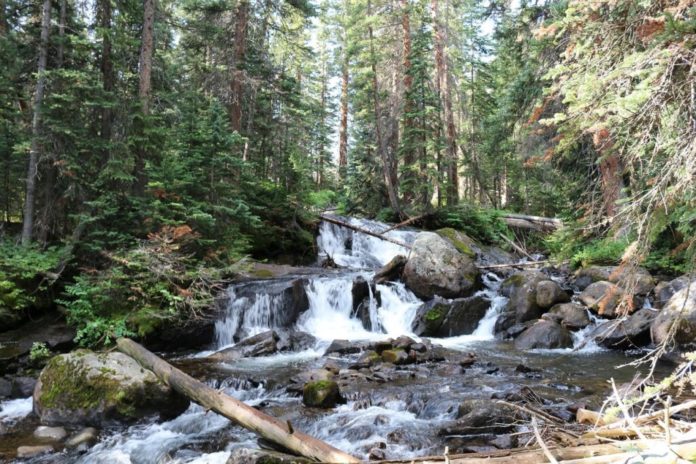Photo by Steve Elder / Eagle Summit Wilderness Alliance
Six years ago, I had newly discovered the tenkara approach to fly-fishing, and I was eager to get into more wilderness areas to try it out. I had been in and around wilderness most of my life, but I had been largely diverted from dedicated wilderness by mountain biking, Alpine skiing, paddleboarding and other outdoor activities that don’t suit the untrammeled areas preserved as wilderness.
One day, I invited my 22-year-old daughter, Emily, on a day hike into Upper Cataract Lake in the Eagles Nest Wilderness Area. She readily agreed, and we hiked about 5 miles into the lake, a healthy brook trout fishery. Once Emily, who had never fished before, saw the colorful trout coming up from the depths to examine and sometimes strike my fly, she was hooked. She asked to try my rod and was soon catching fish. Since then, we have both done much more tenkara fishing while exploring many of the wilderness areas throughout Colorado.
Tenkara is a method of fly-fishing that involves only a rod, a line and a fly; there is no reel. It’s a technique of fixed-line fishing that was developed hundreds of years ago in the mountains of Japan by commercial fishermen to catch the native fish of the high streams there. It was designed to be effective, simple and inexpensive — attributes perfectly adapted to wilderness.
Since the rod needs no guides to hold the line along its length, tenkara rods are telescoping and perfect for your backpack. The flies are uncomplicated and inexpensive. The cast is clean, accurate and easily learned. It also has relatively little backcast to get tangled in trees and brush.
“What I like about tenkara is the simplicity,” Colorado Parks and Wildlife aquatic biologist Kendall Bakich said. “I spend enough time with complicated equipment as a fish biologist. And it gets you out to the most beautiful places in the state.”
In the upper reaches of wilderness, you are likely to find cutthroat trout, Colorado’s only native trout.
“In the wilderness, the native fish are often protected by natural barriers to invasive fishes in order to restore or expand populations of cutthroats,” Bakich said.
In addition to cutthroats in the wilderness, you are likely to find brook trout up high, sometimes coexisting with cutthroats, and brown and rainbow trout are particularly common at lower elevations.
I hope it goes without saying that all fishers anywhere in the state should have a current Colorado fishing license. These fees are extremely important to the preservation and management of natural resources, and it’s the law.
I recommend fishers always use barbless hooks. I also try to practice Leave No Trace principles, trying not to leave line or hooks in the water, trees or bushes. A nice thing about tenkara is that your line, when snagged, is usually within reach of retrieval even when it breaks off. And I always practice careful catch and release practices, keeping the fish as wet as possible throughout the process.
Grab a rod and a backpack, and go explore some wilderness!
As Bakich pointed out, “Some of the highest concentrations of lakes that have fish are in the wilderness.”
“Get Wild” publishes on Fridays in the Summit Daily News. Steve Elder is a board member of Eagle Summit Wilderness Alliance, an all-volunteer nonprofit that helps the U.S. Forest Service protect and preserve the wilderness areas in Eagle and Summit counties. For more information, visit EagleSummitWilderness.org.
Credit: Source link






























